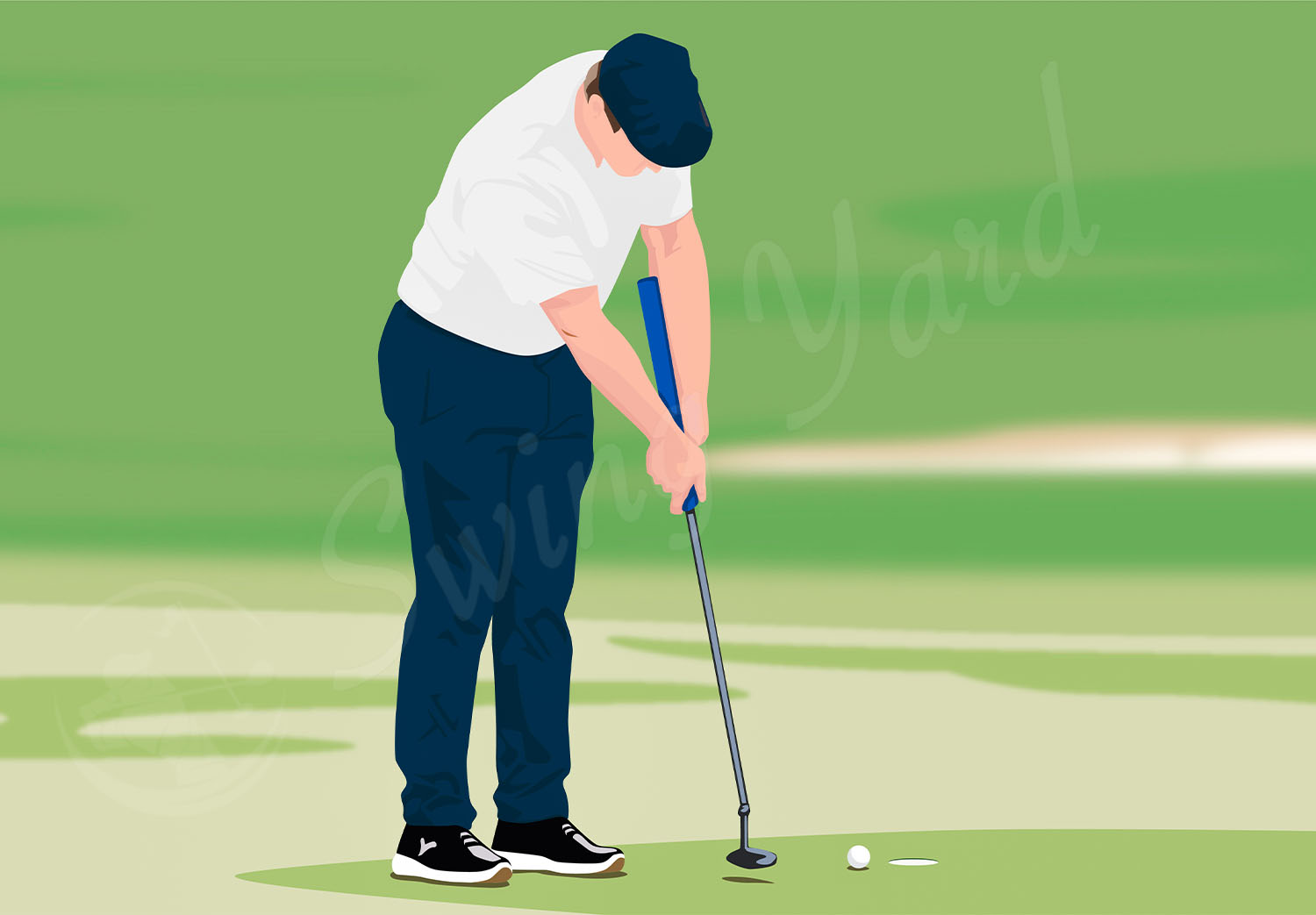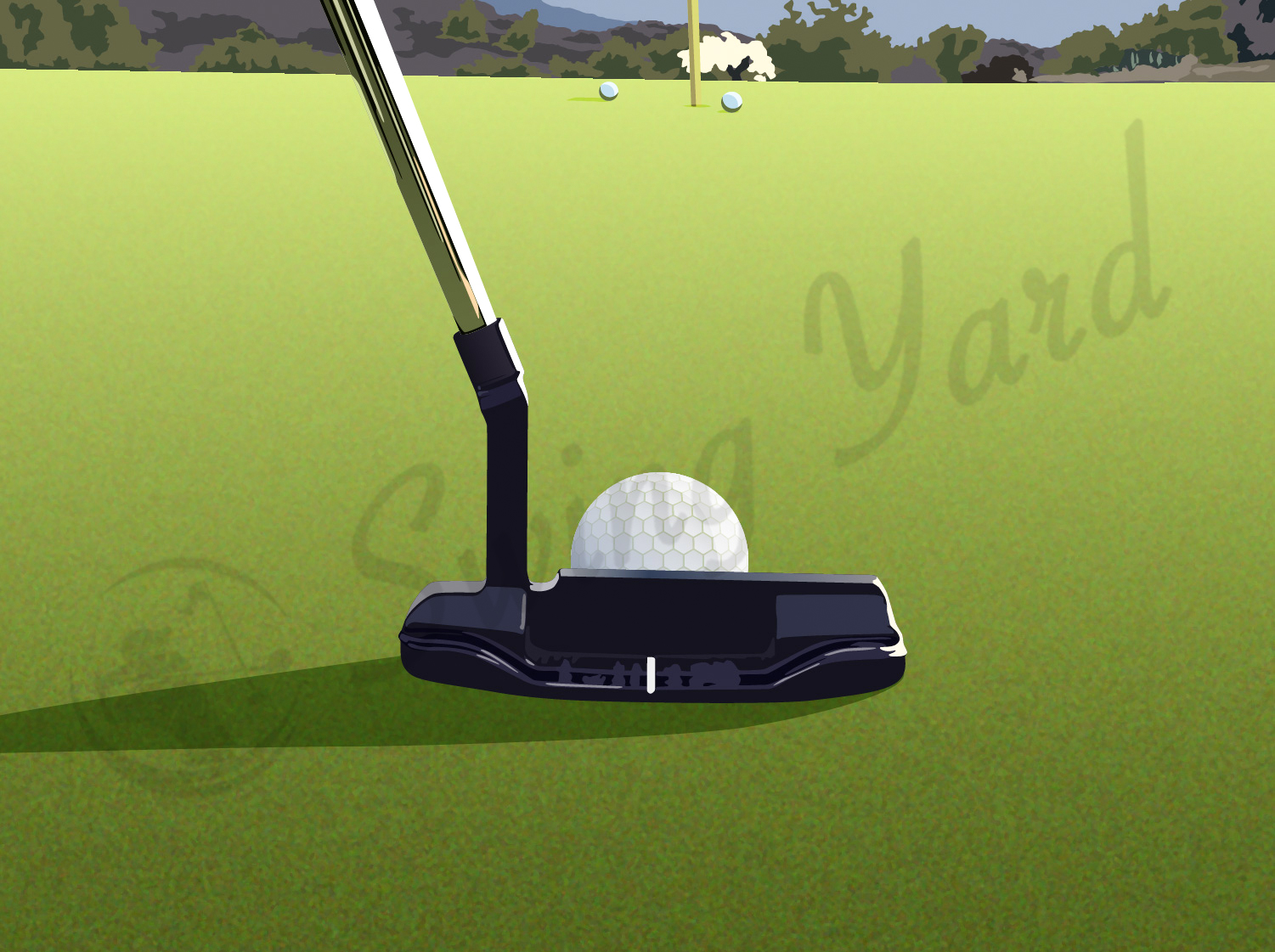All Different Types of Putters: Which head styles are best for you?

By Coach Erik Schjolberg – Jan 31, 2024
Contents
Key Takeaways – Types of Putters
- Putter head – blade, mallet (or half mallet), or modern mallet
- Putter construction – hosel type, milled, or insert
- Putter performance – toe hang or face balanced
- Putter length – traditional, arm lock, or long
The putter is the most important golf club in the bag. Most amateurs think they can choose between a blade or a mallet putter and be well on their way. Unfortunately, there is quite a bit more to choosing a putter than just the shape of the putter head.
If you want to ensure you are picking the putter that is best for your game, then you have to first have knowledge about the types of putters on the market. Here is a general guide that gives you a high-level understanding of each type of putter and how it can help.
Different Types of Putter Heads
Mallet putters and blade putters were always the two main types of putter heads. However, in recent years with the release of these large mallet putters, there has really been a creation of a third category, the modern mallet.


Blade (left in image above)
Blade putters are the most traditional. They often resemble a thin rectangle and have a variety of hosel selections that players can choose from. Blade putters are very popular among the lower handicap golfers and those that value precision on fast greens.
Mallet Style Putters (or Half Mallet)(middle in image above)
Mallet putter head types were designed when the original blade putter was not all that forgiving. Golfers that wanted more stability in a putting stroke did well with these mallet style designs that looked like a semi circle coming out the back of a blade putter.
Mallet style putters have evolved considerably since their initial release, but there are still plenty of manufacturers like Scotty Cameron and Odyssey that make a standard smaller traditional mallet.
Modern Mallet (right in image above)
The modern mallet is the putter that looks a bit like a shoe box on a stick. Although this may not sound all that appealing, these modern mallets are really popular. Golfers find they have an easier time controlling the starting line on the golf ball, and even professionals have been known to use these large modern mallet putters.
Types of Putter Construction/Manufacturing
In addition to the style of the putter head, you also need to understand the way the putter is built. The information to understand here is the putter face design and construction as well as the way the putter attaches to the club head.
Putter Necks (Hosel Connections)
The putter neck or the hosel is the connection between the putter head and the shaft. Sometimes you will see center shafted putters or heel shafted putters. In addition, there are many different types of putter necks, including plumbers neck, short slant, double bend, or more.


How the putter head and shaft connect will impact how you deliver the putter face to the ball. For some golfers, the proper putter neck can result in much more forgiveness and accuracy.
Milled Putter Styles
Milled putters are a putter style made from one single piece of metal. The manufacturing process of milled putters is considerably more advanced. These metal faced putters sometimes have grooves that help golfers improve on the consistency of their roll. Groove-faced putters will sometimes help eliminate any kind of a skip or jump off the face.


Milled putters are also known for a pure feel, as there is very little vibration in the putter head.
Insert Putter Styles
Insert putters are those that are made of more than one piece. With insert faced putters, you will have something that adds an additional layer or level of performance.
For instance, the Odyssey putters often feature the White Hot Insert. This material offers a softer feel and helps those struggling to keep that flat stick under control. With an insert in place, the putter may even sound softer than the milled design.


With inserts like this, you will notice that a big portion of this decision is personal preference.
Different Putter Styles – Performance
The performance of a golf putter is how it helps a golfer make more putts. In recent years we have seen a lot of changes with toe balanced putters and face balanced putters. The most important thing to understand here is the way the face of the putter is returned to the impact position.


Also note that toe hang and face balanced is a spectrum, not either or… as you can see in the image above.
Toe Hang (the far right in the above image)
Toe hang putters are one of the putter styles that have extra toe weighting to help square the putter’s head. This is necessary for golfers that have an arc style putting stroke. If you are struggling to keep the golf ball from squirting to the right at impact, a little more toe hang is a good thing for your game.
Face Balanced (the far left in the above image)
The face balanced putters are best for a straight to straight putting stroke. In other words, if you want to leave your putter face straight to the target during the entire stroke, the face balanced putters can help.
Combining the face balanced technology with modern alignment aids makes the straight back and straight through style really appealing from a forgiveness standpoint.
Putter Types – Length
Now that I’ve discussed putter head material, heel and toe weighting, and putter head style and design, it’s time to look into another factor that many golfers forget to consider, and that is putter length.
Putter length is pretty well regulated by the USGA and R & A. If you remember correctly, just a few years ago, belly putters were considered an unfair advantage.
We have seen some different type of putters come out since then trying to help golfers that are missing those belly putters, but if you ask a guy like Keegan Bradley, it would be nice to have them back.
Traditional Length
Traditional length putters are usually anywhere from 33 to 35 inches. Depending on a player’s height, you can also see these traditional golf putter types in the 32 or 36-inch length. The shaft length will impact where you stand and your head position during the putting stroke.


Although there are golfers that say they get more forgiveness on off-center hits by using the arm lock or long putters, the vast majority of golfers will use a traditional length putter.
Arm Lock Length
The arm lock length putter is a replacement for the belly putter. This requires a longer grip and a slightly longer putter for most players. The controlled feel of using the arm lock putter length is what makes it appealing for golfers, especially on a short putt.


Long Putters
Long putter types are often called a broomstick style. This rare design allows for some unique setups and stroke styles. Some senior golfers like to use the long putters as it can be a bit easier than having to bend so much. In addition, long putters allow for a different view down the line.


FAQ – Styles of Putters
Here are a few of the most commonly asked questions about the styles of putters available for golfers.
What are the 3 types of putters?
The three putter types are considered the blade, mallet, and then modern mallet. Some will refer to this as traditional putters, blade, and mallets but as an amateur player knowing the difference between a blade vs mallet putter is most important.
How do you know what type of putter to use?
The best way to know which putter to use is to determine what type of stroke you have. If you take the club on an arc path, straight back, and straight through path, the putter you need will be different.
What type of putter is most forgiving?
Most golfers find that a larger mallet style putter with face balance technology is going to be the most forgiving. If you are already using a mallet putter, you could try borrowing a different type from a friend to practice putting at home.
What putter style is best for beginners?
There are quite a few different types of putters that can work for beginners. The mallet style putter was traditionally considered more forgiving, but in recent years, toe-weighted blade style putters have made a major upgrade in the MOI that they offer players. Make sure to check out my step-by-step guide on how to put better if you haven’t already!
Can changing the way I grip the putter help me to improve?
Changing the way you grip the putter can help you improve tremendously – the problem is, there are dozens of ways you can do it depending on what works best for you. I’d recommend starting with these three styles first: prayer, saw, or pencil putter grip. If those still don’t feel right, check out the rest of the putting grips here.
Final Thoughts – Different Types of Putters
Hopefully, you now have a better understanding of the types of putters on the market. This will give you a broad overview of what is out there. However, remember that each company has its own way of doing things, and the combinations of these features can vary considerably from one brand to the next.


More putter companies come on the market every year, so chances are there will be new types of golf putters any day. Now its time to get out there and practice, even during an office break!

